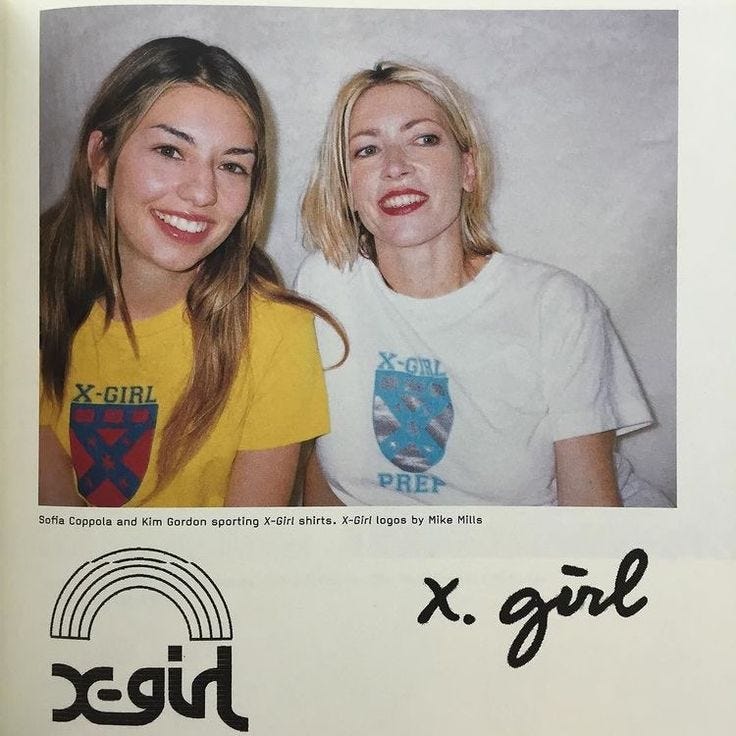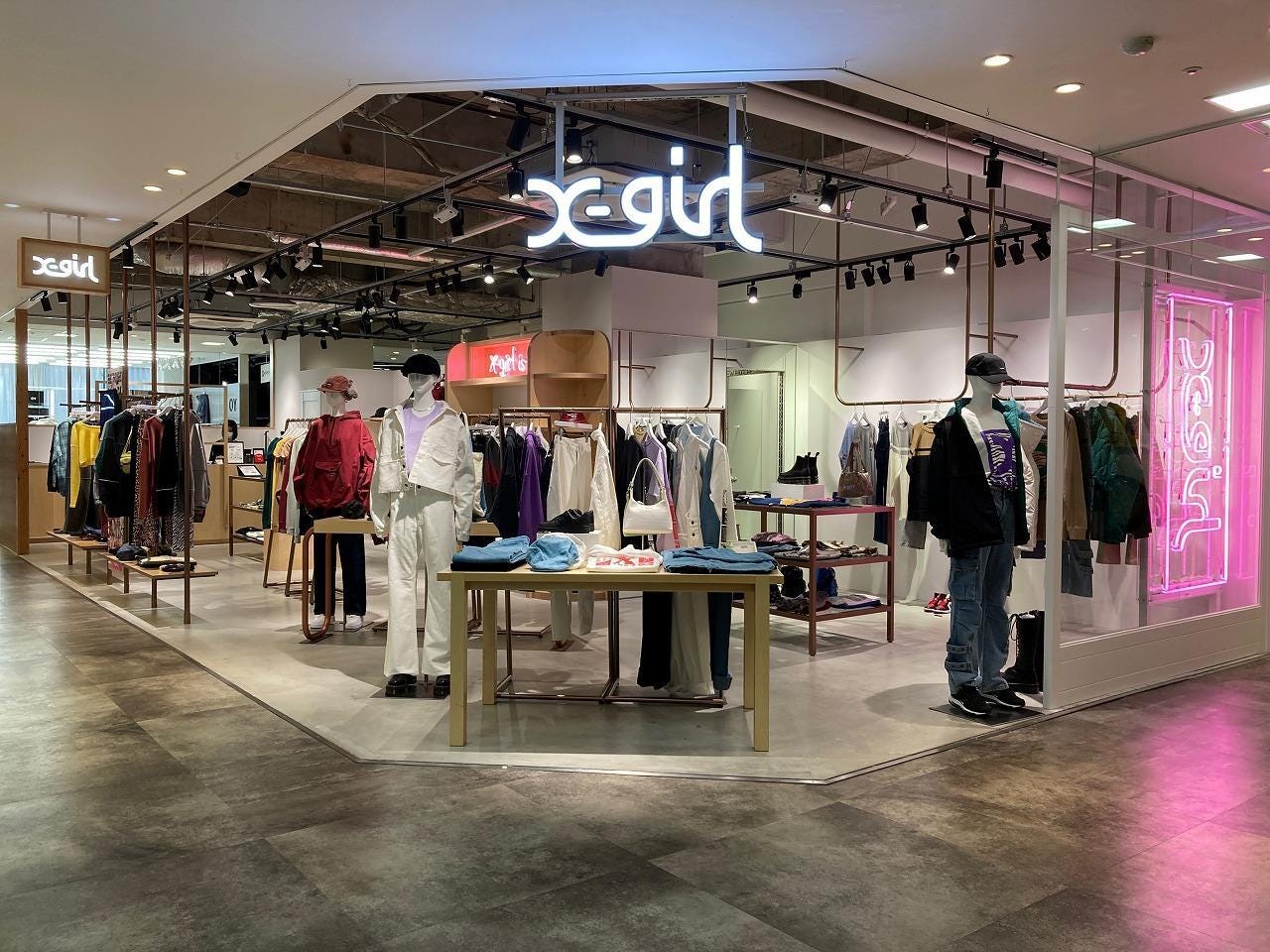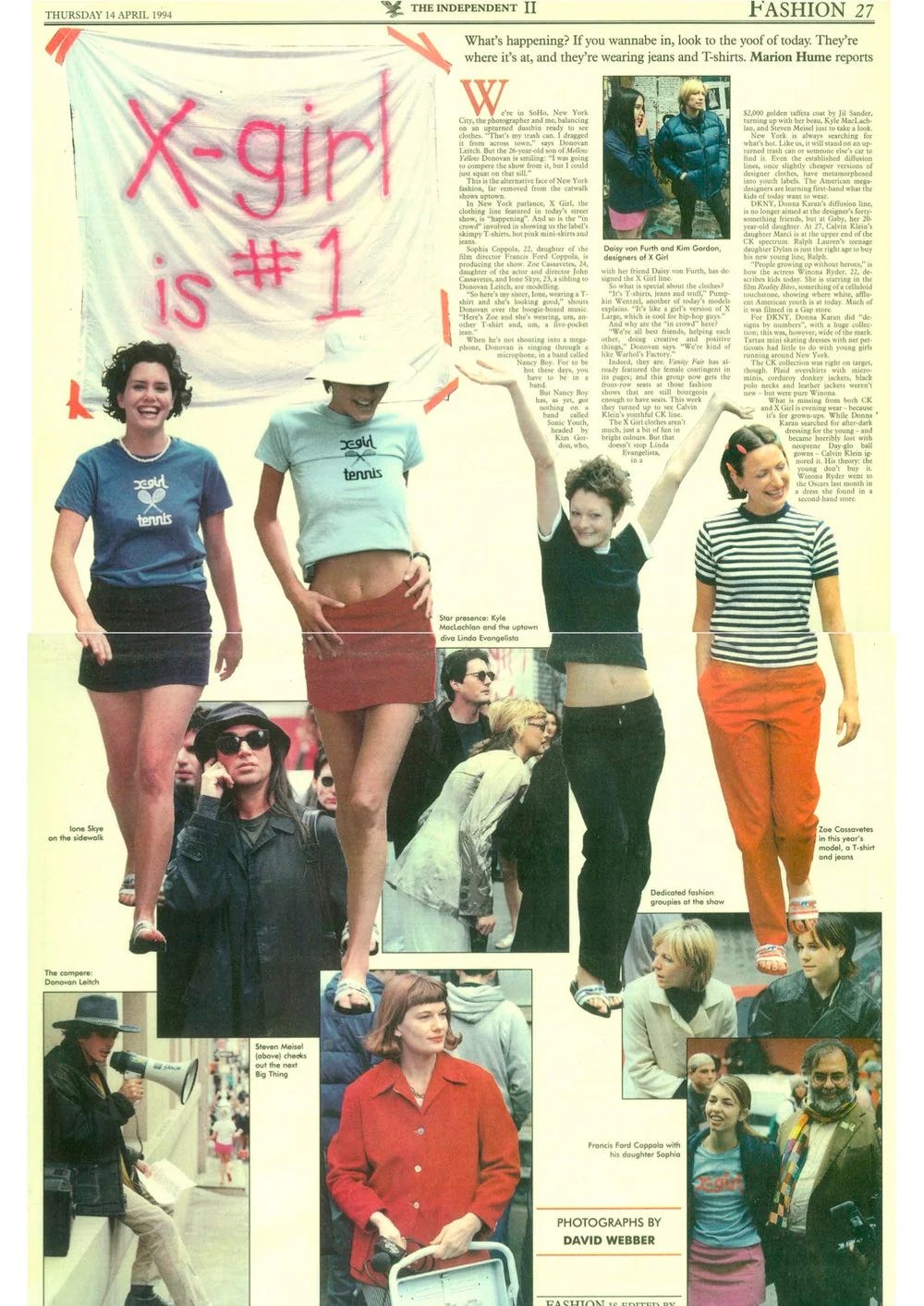The blue fluff caught my eye in the Hiroshima branch of 2nd St. I thought perhaps I had stumbled upon a Blumarine Eco Fur bag, but what I discovered was, for a ’90s lover, far superior.
It may not be designer but it was iconic nonetheless, especially because when I spotted the X-girl logo, a core memory was unlocked. I was instantly transported back to the pages of my pre-teen magazines and weekly episodes of Buffy—tuning in just to clock her outfits even if it meant experiencing some minor vampiric night terrors.
Honestly, I had forgotten about this brand, so rediscovering it has been super nostalgic.
X-girl, founded by Kim Gordon of Sonic Youth and stylist Daisy von Furth, was a pioneer of the ‘Girl's Movement,’ empowering women through real girl’s clothing. The collections amalgamated different aesthetics across art, music, and design, bringing a fresh perspective to the mainstream.
The brand pushed boundaries on self-expression, shifting the paradigm beyond traditional female archetypes, challenging convention and paving the way for future brands to do the same.
It started in the US but is now Japanese-owned, with flagship stores around Tokyo from Cat Street to Laforet in Harajuku.
Their origin story is a tale of 1990s rebellion and creativity, featuring icons I am still obsessed with today.
It began in the summer of 1994. XLARGE was a popular LA streetwear brand where Kim Gordon’s friend Daisy von Furth worked. XLARGE also had celebrity business partners, notably Mike D, one of the members of the Beastie Boys.
The story has it, that Mike asked Kim if she was interested in starting a clothing line. She said yes, so Kim and Daisy, began to design real clothing—essentially just a collection of pieces they’d want to wear themselves.
Rebecca Johnson in an article for Vogue describes the clothes as "a little bit mod, a little bit Godard girl, a whole lot tomboy. They were like slimmed-down versions of what their brother brand X-Large had done for skaters and wannabes and poseurs. X-Girl made pants you didn’t drown in, cuts that made you look like a girl, but, you know, still cool. I had a sleeveless A-line minidress, a ringer tee, a pair of pants—the pants ruled—and a grey and black check micro miniskirt"
She also describes X-girl as "the gateway fashion drug for ’90s girls who were anti-establishment, anti-mainstream, anti-consumer, strictly secondhand, skate-schooled, reared on DIY ethics, on punk, hip-hop, with a shot of indie rock."
Now, onto the branding: The logo of X-girl is just as iconic as the clothes themselves, originally designed by Mike Mills. An American film and music video director, writer and graphic designer.
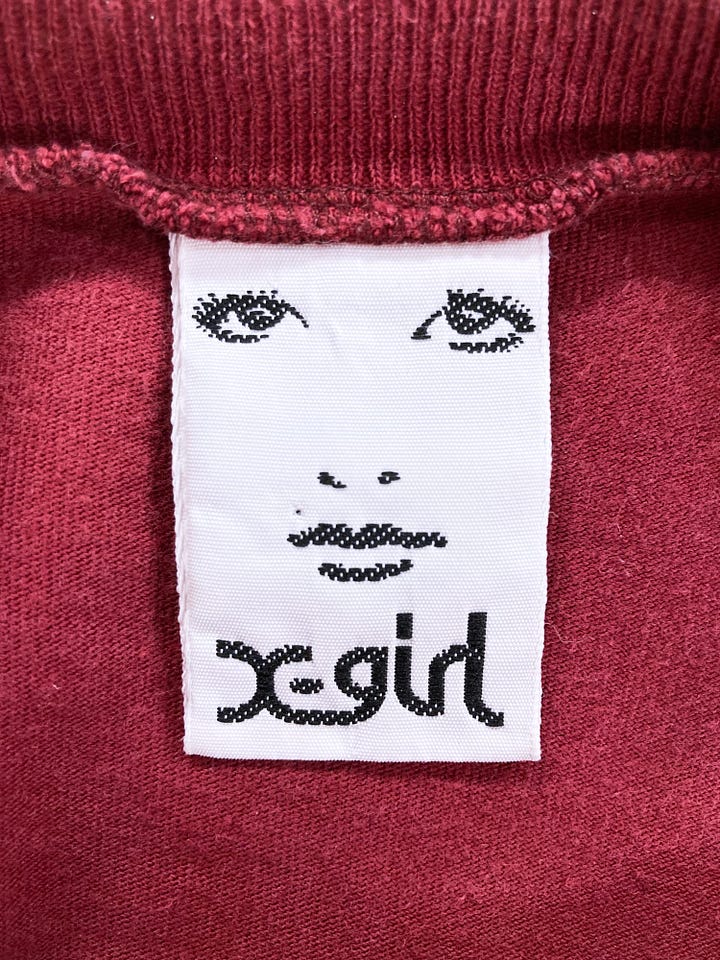
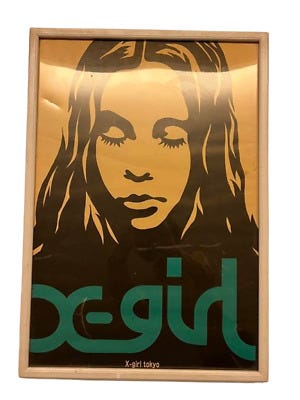
Mike has created graphics and textiles for Marc Jacobs, music videos for Yoko Ono, album artwork for The Beastie Boys, and more—the breadth of his work is incredibly inspiring. He also went on to design t-shirts and posters for X-girl, many of which are still recognised today.
In 1994, things got even more legendary with X-Girl's first guerilla-style runway show. Sofia Coppola and Spike Jonze hijacked Marc Jacob's show and took over the streets of Soho, with it-girl Chloë Sevigny front and centre. No big budgets, no VIP access, just a painted sheet proclaiming X-girl is #1, and punk spirit coming together in one moment to subvert the typical idea of what a fashion runway show should be.
Also worth noting, the show went down only two days after Kurt Cobain's death. The timeline and chain of events, as Rebecca explains in her piece for Vogue: "was a true microcosm of the ’90s."
This is why, for me, X-girl represents a pivotal moment in fashion history. It's also incredibly inspiring to see one of the first female-founded streetwear brands thriving 30 years later.
I hope you enjoy rediscovering it as much as I have.






